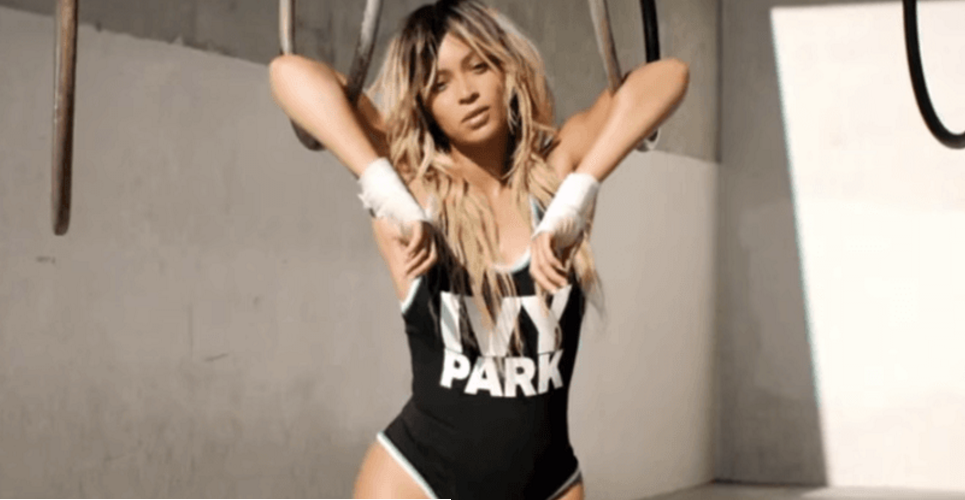Beyoncé has launched, in collaboration with the owner of Topshop, a range of activewear (clothing for sport or exercise) named Ivy Park.
The singer joins a growing list of celebrities who have launched activewear collaborations, including: Kanye West with Adidas, actor Kate Hudson’s Fabletics with JustFab Inc, and (unbelievably) a special collection created by director David Lynch for the online health hub, Live the Process.
So why does activewear bring the famous to the co-creation sweat table?
Activewear makes good economic sense
According to Morgan and Stanley, worldwide sports apparel sales have risen 42 per cent to US$270 billion over the past seven years. The global sports apparel market, which includes activewear, is poised to grow to US$178 billion per annum by 2019.
Florals from David Lynch’s special collection with Live the Process. Live the Process.
In Australia, this has translated to an annual growth of 8.8 per cent between 2011 and 2016, with estimates suggesting it will continue to rise.
Morgan and Stanley estimate that the industry could grow by a further 30 per cent by 2020. With such staggering growth figures it’s worth considering what has created this economic success story.
Activewear makes cultural sense
24/7 activewear taps into the health and well-being industry, offering an accessible entry point to better living. While its presence in the gym is expected, activewear outside of the gym is on the rise.
Activewear isn’t the high performance sporting apparel of Nike’s “Just Do It” campaign: it’s targeted at everyday people doing everyday things. Stripped of its performance measures, activewear can be marketed to a much broader audience.
This is particularly so with Beyoncé’s collection, which has a price range of AU$40-$270 and will be sold at TopShop, Nordstrum and Net-a-Porter.
Celebrity endorsed sportswear is hardly new. The 1980s brought celebrity endorsed legwarmers, headbands and leotards with their accompanying musical beats extolling the virtues of physical activity. But these were garments to be worn only while actually in the gym, or as it was then known, while getting physical.
Today’s activewear differs in two ways: it’s designed to be worn out of the gym as much as in it; and because of that, there’s less of a presumption that the wearer is either on their way to or from physical activity.
This shift has allowed performers such as Novelist and DJ Logan Sama to become champions of specific activewear, (such as Nike’s AirMax) and to release videos where they speak about the ways in which products have positively influenced their lives - without actually doing any physical activity.
UK rappers Novelist and Skepta talk about the personal meaning of Nike AirMax.
It has also produced the marketing category of the nu-lad, a tracksuit-wearing, 20-something, post-hipster who is ready for action but unlikely to undertake activity any time soon.
Beyoncé – a superfit, hugely successful, hard working woman – promotes her clothes with the strapline “Where is your park”. It seems not to send us to the gym but rather to our deepest selves.
Beyoncé’s activewear may well create a new romantic obsession with physical activity – one we’re primed to receive after years of watching aspirational TV cooking programs, whether we can cook or not.
Activewear doesn’t ask much of the wearer
With activewear, customers make up their own minds about how and where they engage with activity. With no expectation that they will do anything in particular, there’s no judgement about where or how they wear the clothing. This is illustrated by comedy group Skit Box, who lampoon the rise of activewear in our daily lives:
Beyoncé’s activewear follows a long tradition of American ingenuity in reaching out to new audiences in the name of activity. In the 1890s as cycling became a leisure activity, new “cycling costumes” were designed and marketed to the general public.
In the 1940s, American fashion designer Claire McCardell championed the development of modern sportswear.
Each development responded to changes in the way that leisure and sport have been conceptualised. Seen in this context, Beyoncé’s accessible activewear should be considered more than just another fashion collection: Ivy Park has the potential to be a game changer for the activewear marketplace.
 Angelina Russo has received funding from the Australian Research Council for research into digital content creation and multiplatform publishing. She is an invited Advisory group member of the Australian Cyclist's Party and she runs a microenterprise where she designs and hand-makes active knitwear www.culturecycle.org
Angelina Russo has received funding from the Australian Research Council for research into digital content creation and multiplatform publishing. She is an invited Advisory group member of the Australian Cyclist's Party and she runs a microenterprise where she designs and hand-makes active knitwear www.culturecycle.org
Angelina Russo, Professor of Cultural Practice
This article was originally published on The Conversation. Read the original article.




 Pulp are back and more wistfully Britpop than before
Pulp are back and more wistfully Britpop than before  Trump to Pardon Reality Stars Todd and Julie Chrisley After Tax Fraud Conviction
Trump to Pardon Reality Stars Todd and Julie Chrisley After Tax Fraud Conviction  Mexico Probes Miss Universe President Raul Rocha Over Alleged Criminal Links
Mexico Probes Miss Universe President Raul Rocha Over Alleged Criminal Links  Disney Investors Demand Records Over Jimmy Kimmel Suspension Controversy
Disney Investors Demand Records Over Jimmy Kimmel Suspension Controversy  Bitcoin Defies Gravity Above $93K Despite Missing Retail FOMO – ETF Inflows Return & Whales Accumulate: Buy the Dip to $100K
Bitcoin Defies Gravity Above $93K Despite Missing Retail FOMO – ETF Inflows Return & Whales Accumulate: Buy the Dip to $100K  Trump Threatens Legal Action Against Disney’s ABC Over Jimmy Kimmel’s Return
Trump Threatens Legal Action Against Disney’s ABC Over Jimmy Kimmel’s Return  6 simple questions to tell if a ‘finfluencer’ is more flash than cash
6 simple questions to tell if a ‘finfluencer’ is more flash than cash  Bitcoin Smashes $93K as Institutions Pile In – $100K Next?
Bitcoin Smashes $93K as Institutions Pile In – $100K Next?  Trump Faces Mixed Reception at Kennedy Center Amid Conservative Overhaul
Trump Faces Mixed Reception at Kennedy Center Amid Conservative Overhaul 































